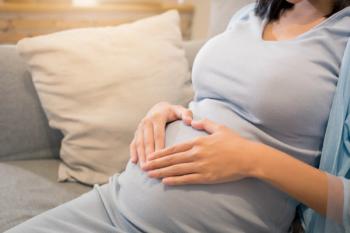
Elinzanetant reduces vasomotor symptom frequency and intensity in new meta-analysis
A meta-analysis presented at 2025 ACOG Annual Clinical & Scientific Meeting found that elinzanetant demonstrated a reduction in VMS frequency and intensity.
A new meta-analysis presented at the 2025 American College of Obstetricians and Gynecologists (ACOG) Annual Clinical and Scientific Meeting adds to the growing evidence supporting elinzanetant (Bayer), a novel nonhormonal therapy for vasomotor symptoms (VMS) associated with menopause. These symptoms, including hot flashes and night sweats, affect up to 80% of menopausal women and can significantly disrupt daily life, sleep, and long-term health.1
The study pooled results from 3 randomized controlled trials (RCTs), encompassing data from 995 patients—551 treated with elinzanetant and 444 who received placebo. Women in the trials had a mean age between 54.4 and 55.6 years, and the outcomes focused on frequency and intensity of VMS, as well as quality of life and sleep disturbance.1
Researchers found that elinzanetant significantly reduced the frequency of vasomotor symptoms (mean difference [MD], -23.09; 95% CI, -24.18 to -22.01) and their intensity (MD, -0.32; 95% CI, -0.45 to -0.21) compared to placebo. Additionally, improvements were seen in quality of life, as measured by the menopause-specific Quality of Life questionnaire (MD, -0.46; 95% CI, -0.63 to -0.30), and sleep disturbances, using the PROMIS Sleep Disturbance Short Form 8b (MD, -4.65; 95% CI, -5.56 to -3.73).1
The authors concluded, “In patients with VMS associated with menopause, elinzanetant reduced VMS frequency and intensity. Furthermore, the drug promotes improvements in measures of sleep and quality of life.”1
The findings are especially timely given the October 2024 FDA acceptance of a New Drug Application (NDA) for elinzanetant.2 In an interview with Contemporary OB/GYN, JoAnn Pinkerton, MD, professor of obstetrics and gynecology at the University of Virginia, called the NDA acceptance “a significant step toward improving menopausal care in the United States.” If approved, elinzanetant would become the third FDA-approved nonhormonal treatment for VMS, joining a small but growing arsenal of options for women who cannot or prefer not to use hormone therapy.3
The drug’s performance in the OASIS 1 and 2 trials further supports its clinical potential. In those studies, elinzanetant led to rapid symptom reduction—within just 1 week—with over 80% of participants experiencing at least a 50% decrease in hot flash frequency by week 26. These improvements were sustained through the 52-week OASIS 3 trial, where participants also reported better sleep and enhanced daily functioning.2
Speaking on the results of the OASIS 1 and 2 studies, Pinkerton said, "The good news was that [elinzanetant] we met its primary objective. Hot flashes were significantly reduced at 12 weeks in this population of women who were not as severe as those in OASIS 1 and 2—more like you would see in your clinical practice—significantly reduced compared to placebo at 12 weeks, and then maintained that efficacy throughout the 52 weeks.”3
Pinkerton emphasized the broader health implications of untreated VMS, which affect up to 80% of menopausal women and are linked to cardiovascular risks, cognitive decline, mood disturbances, and bone loss. “There is a clear need for effective, nonhormonal therapies,” she said, noting that elinzanetant’s novel mechanism of action and favorable safety profile set it apart from existing treatments.3
Common side effects reported in clinical trials have included fatigue, headaches, and joint pain, but no serious safety concerns such as endometrial thickening or liver toxicity, have emerged. Research is also underway to evaluate elinzanetant in women with breast cancer who are on tamoxifen or aromatase inhibitors, a group with limited VMS treatment options, and in those with severe sleep disturbances.2
Taken together, the new meta-analysis and the clinical trial data suggest that elinzanetant could soon become a new available therapy for menopausal women, offering symptom relief without hormones, and with meaningful benefits for sleep and quality of life. The medical community now awaits the FDA’s decision, which could open the door to a new standard of care.
References:
1. Rocha P, Sampaio Sobral MV, Rodrigues L, Pereira da Silva D, Mácola Pacheco Barbosa A, Alvarez-Galiana VM. Efficacy and Safety of Elinzanetant in Vasomotor Symptoms Associated With Menopause: A Metaanalysis of Randomized Controlled Trials. Abstract. Presented at: 2025 American College of Obstetricians and Gynecologists (ACOG) Annual Clinical and Scientific Meeting. May 16-18, 2025. Minneapolis, Minnesota.
2. Ebert M. FDA accepts elinzanetant NDA for vasomotor symptoms in menopause. Contemporary OB/GYN. October 9, 2024. Accessed May 15, 2025.
3. Krewson C. JoAnn Pinkerton discusses elinzanetant's crucial role in VMS therapy. Contemporary OB/GYN. October 11, 2024. Accessed May 15, 2025. https://www.contemporaryobgyn.net/view/joann-pinkerton-discusses-elinzanetant-s-crucial-role-in-vms-therapy
Newsletter
Get the latest clinical updates, case studies, and expert commentary in obstetric and gynecologic care. Sign up now to stay informed.











